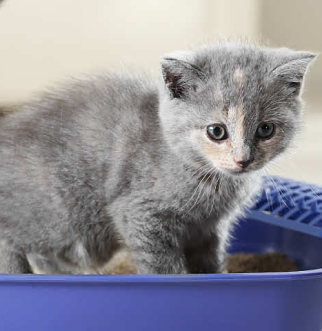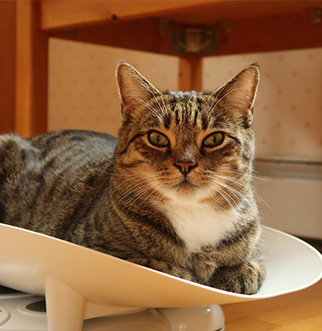
-
Find the right food for your pet
Take this quiz to see which food may be the best for your furry friend.
Find the right food for your pet
Take this quiz to see which food may be the best for your furry friend.
Featured products
 Small & Mini Savory Stew with Chicken & Vegetables Dog Food
Small & Mini Savory Stew with Chicken & Vegetables Dog FoodA delicious complement to the nutrition of Science Diet Small & Mini 7+ dog food
Shop Now Adult 7+ Perfect Digestion Chicken, Whole Oats & Brown Rice Recipe Dog Food
Adult 7+ Perfect Digestion Chicken, Whole Oats & Brown Rice Recipe Dog FoodScience Diet's breakthrough nutrition supports ultimate digestive well-being & healthy microbiome for dogs age 7+
Shop Now Adult Healthy Cuisine Roasted Chicken, Carrots & Spinach Stew Dog Food
Adult Healthy Cuisine Roasted Chicken, Carrots & Spinach Stew Dog FoodDelicious roasted chicken paired with tender vegetables in a succulent stew
Shop NowFeatured products
 Adult 7+ Senior Vitality Chicken & Vegetable Stew Cat Food
Adult 7+ Senior Vitality Chicken & Vegetable Stew Cat FoodImproves Everyday Ability to Get Up & Go
Shop Now Adult Savory Entrée Can Variety Pack Cat Food
Adult Savory Entrée Can Variety Pack Cat FoodPrecisely balanced nutrition with the delicious taste of savory minced chicken to help fuel the energy needs of cats during the prime of their life
Shop Now Adult 7+ Tender Tuna Dinner Cat Food
Adult 7+ Tender Tuna Dinner Cat FoodWith delicious chunks in a decadent gravy
Shop Now -
Dog
- Dog Tips & Articles
-
Health Category
- Weight
- Food & Environmental Sensitivities
- Urinary
- Digestive
- Joint
- Kidney
-
Life Stage
- Puppy Nutrition
- Adult Nutrition
- Senior Nutrition
Cat
- Cat Tips & Articles
-
Health Category
- Weight
- Skin & Food Sensitivities
- Urinary
- Digestive
- Kidney
-
Life Stage
- Kitten Nutrition
- Adult Nutrition
Featured articles
 Do Dogs and Cats have Belly Buttons?
Do Dogs and Cats have Belly Buttons?Learn whether cats & dogs have belly buttons like humans, what the function is, and if there are any health concerns associated with it.
Read More Does My Pet Hate Me?
Does My Pet Hate Me?Learn tips for bonding with your pet if you've ever thought, 'My dog doesn't like me, or 'Why do I have a standoffish cat?'
Read More Why Are Dogs and Cats So Cute?
Why Are Dogs and Cats So Cute?If waggy puppy dog tails and furry kitten yawns make you swoon, you're not alone. Why are cats so cute? And, dogs too! Let's find out!
Read More -


Many medical terms are notorious for being confusing, but ringworm is undoubtedly one of the most misunderstood. Though people commonly assume this disease is caused by a parasite, ringworm in cats has nothing at all to do with worms. Ringworm in cats, also known as dermatophytosis, is caused by a fungal infection of the skin, most often caused by the fungus Microsporum canis,according to the Merck Veterinary Manual.
How Do Cats Get Ringworm?
The trouble with ringworm is that you really can't hide from it. Cat ringworm is caused by a fungal organism that lives just about anywhere in the environment. It is found in soil and thrives particularly in warm, humid environments. Ringworm agents aren't restricted to soil, though; the fungal spores are tiny enough that they can easily hitch a ride on blankets, clothing and fur and be transported indoors, where they can flourish as well.
Once the fungus finds a living food source, such as a cat, dog or human, it sets up shop in the hair follicle. It feeds on keratin, making hair, nails and skin its main nutritional sources. Here is where ringworm gets a little tricky; even if a cat becomes contaminated with the fungus, it doesn't mean they will always develop a ringworm infection, which is good news for pets and pet parents worldwide, said Cornell Feline Health Center.
Once on the cat, a meticulous self-groomer may simply rid the fungus from their coat. Other competitors, such as bacteria, thriving on the cat's skin may outnumber and defeat the fungus or the fungus may survive and stick around. While some cats can be asymptomatic when they are infected with ringworm, a number will develop clinical signs of infection.
What Are the Symptoms of Ringworm in Cats?
This is the only part of the name that warrants credit to those who coined the disease's name: ringworm often presents itself as a circular reddish rash — a ring — on the skin of an infected cat. Cats may begin to lose hair or develop a dull or stubby coat. Signs may progress to patchy hair loss, scaling or itchy skin and infected nails.

How Common Is Cat Ringworm?
While some diseases are rare, ringworm makes its rounds; it is perhaps the most frequently encountered infectious skin disease of cats worldwide. While it can affect any cat, kittens with less robust immune systems are more likely to develop an infection. Long-haired cat breeds are also more susceptible, along with cats in high-population settings (such as catteries), cats with other systemic diseases that may weaken their immune system or cats with poor nutrition.


Tasty Tips
Should I Be Concerned About Ringworm?
Yes and no. Ringworm in cats is not typically serious, but it can spread to people as well as other animals, such as dogs. Transmission occurs through direct contact between infected and uninfected individuals. It may be passed from cats to dogs to people in any number of spreading paths.
Adult humans are usually resistant to infection unless there is a break in the skin, such as a scratch, but children and the immune-compromised are especially susceptible. Seek care from your physician if you notice suspicious skin lesions similar to those described for cats. The good news is that because human hygiene is generally more thorough than our pets', a topical antifungal cream or spray may be all that is needed for human treatment.
Don't neglect the environment when dealing with a ringworm infection of either people or pets. The fungal spores may live in bedding or carpet for up to 18 months! A solution of bleach and water can be used to disinfect and kill the fungal spores: One pint of chlorine bleach (500 ml) in a gallon of water is effective on hard surfaces suitable for dilute bleach. This is very important to prevent recurrence of the infection.
What is the Treatment for Ringworm in Cats?
No one likes giving cats oral medications; luckily, there are topical antifungal medications available in the form of creams and sprays that may be effective against ringworm. Clipping fur and dips available at the veterinarian are also useful tools to rid the infection.
Oral anti-fungal medications, such as itraconazole, are often prescribed for more widespread infections or infections that do not clear up with topical therapy. They can be flavored like tuna or other popular cat treats to ease the administration of the oral medications. As mentioned above, environmental decontamination is always an important part of treatment to break the cycle of infection.
A culture for dermatophytes (the ringworm-causing agent) is the only means of truly monitoring a cat's response to treatment. When the infection is extensive or particularly resistant, treatment can drag on for weeks or months. This makes it more than worthwhile to have hair loss and lesions investigated and diagnosed sooner rather than later.
How Can I Prevent Cat Ringworm?
Preventing cat ringworm is challenging but not impossible. First and foremost, a healthy cat with a healthy coat and skin is less likely to develop ringworm from contamination with the fungal spores. Nutrition plays a vital role in maintaining the integrity of a cat's skin and hair follicles, where the fungal spores will fight to inhabit.
If you bring a new cat into the home, consider a quarantine period for the new addition, along with a culture for the ringworm organism, especially if the new cat has any signs of an unhealthy coat or skin.
If a pet is exposed to an animal with known ringworm, you may want to discuss with your vet the possibility of a prophylactic treatment using oral medications for up to two weeks. Ringworm can take weeks or months to clear when an infection has developed. Keeping your cat in their best health is the best way to ward off this itchy and lingering fungal skin infection.


Dr. Laci Schaible is a small animal veterinarian, veterinary journalist, and a thought leader in the industry. She received her Doctor of Veterinary Medicine from Texas A&M University and her Masters in Legal Studies from Wake Forest University.
Related products
Related articles

Discover how to train your cat, starting with very basic first steps that both reward good behavior and discourage the bad.

Cats are naturally very clean and chances are your kitten will already have learned how to use the litter box from her mother before she comes to live with you.

What is the best food for an overweight cat? Learn all about weight control food for cats, including what's in it and how it works.

How do you get a cat to lose weight? Learn all about cat foods for weight loss, including how to choose weight control cat food and exercise tips.

Put your cat on a diet without them knowing
Our low calorie formula helps you control your cat's weight. It's packed with high-quality protein for building lean muscles, and made with purposeful ingredients for a flavorful, nutritious meal. Clinically proven antioxidants, Vitamin C+E, help promote a healthy immune system.
Put your cat on a diet without them knowing
Our low calorie formula helps you control your cat's weight. It's packed with high-quality protein for building lean muscles, and made with purposeful ingredients for a flavorful, nutritious meal. Clinically proven antioxidants, Vitamin C+E, help promote a healthy immune system.

